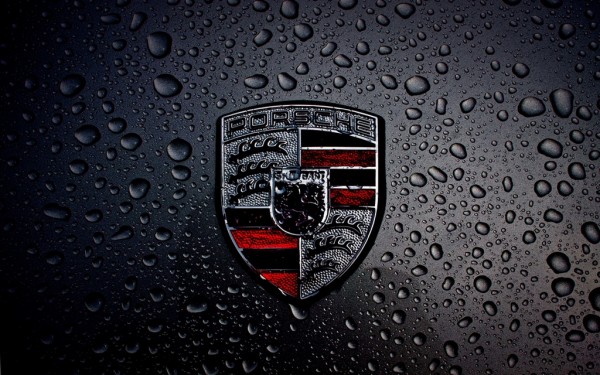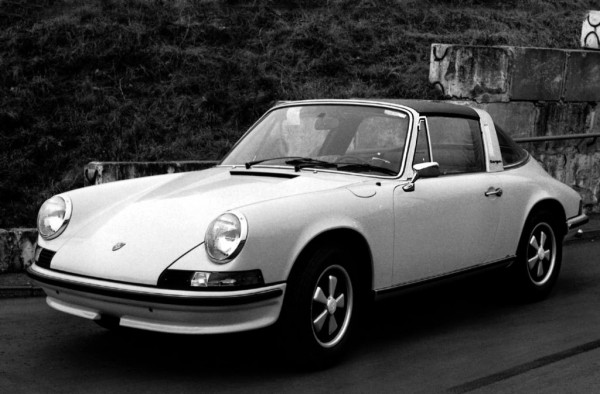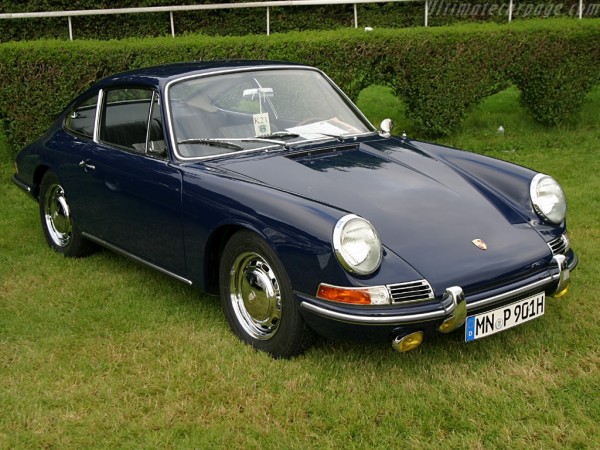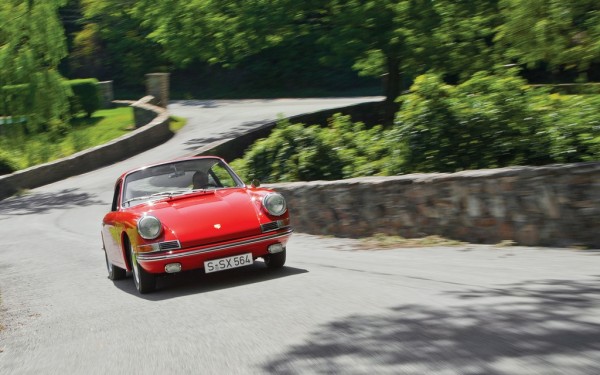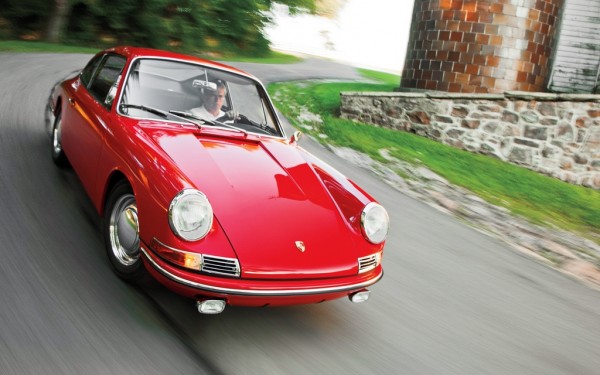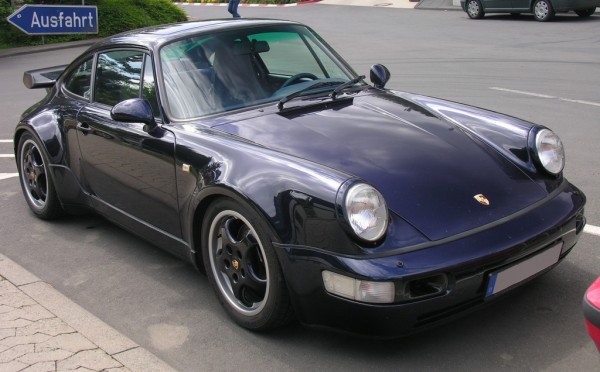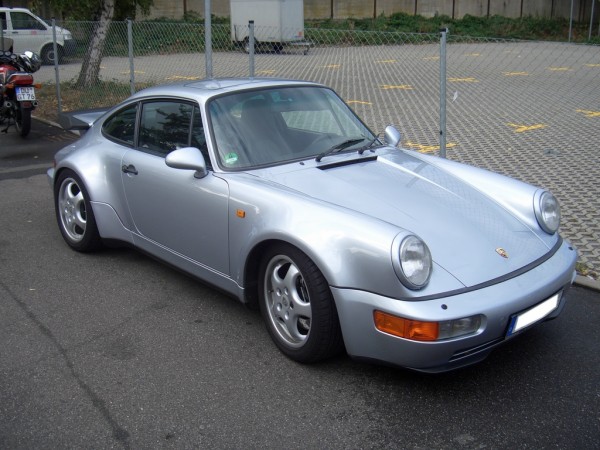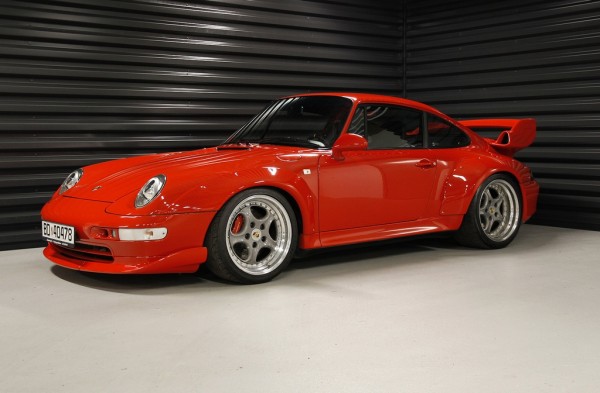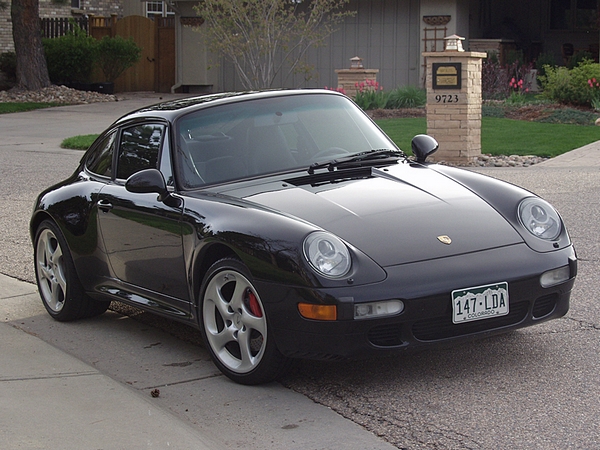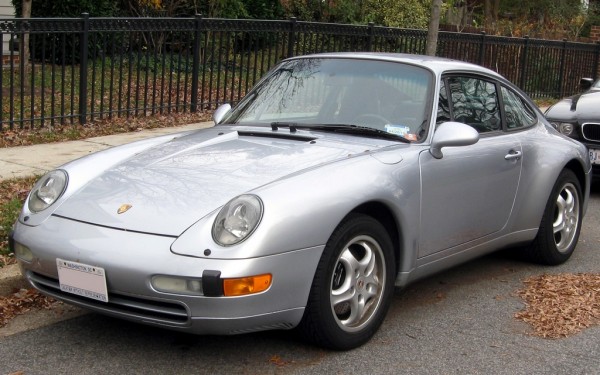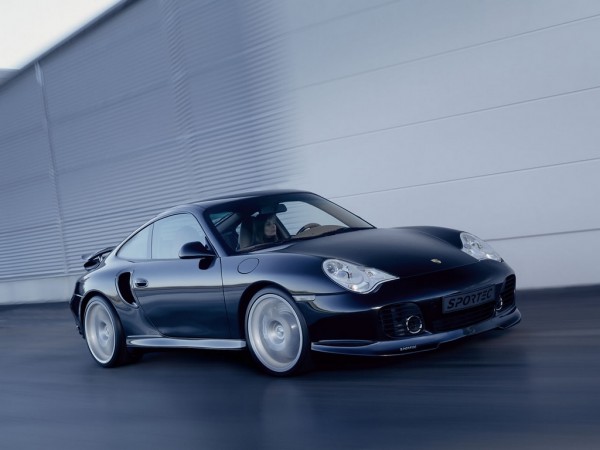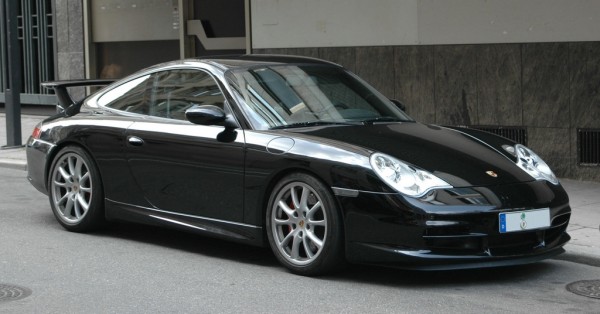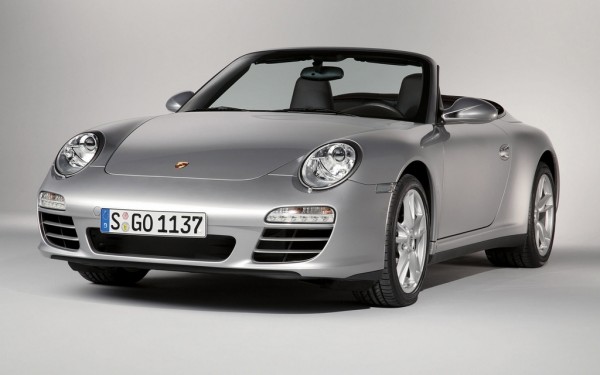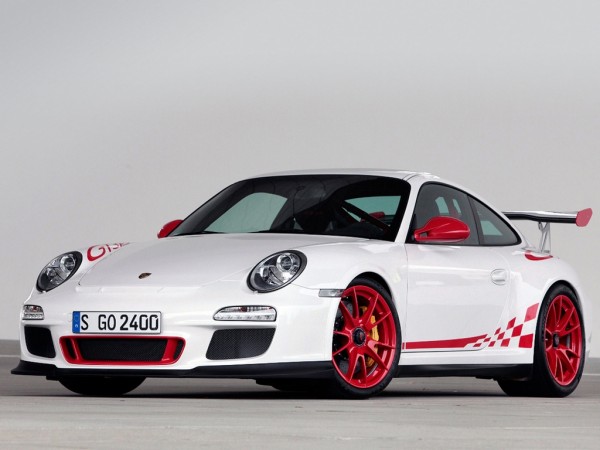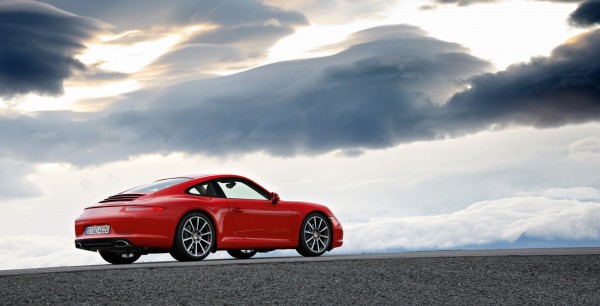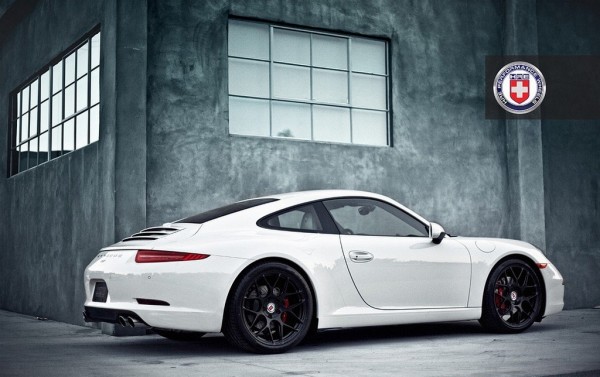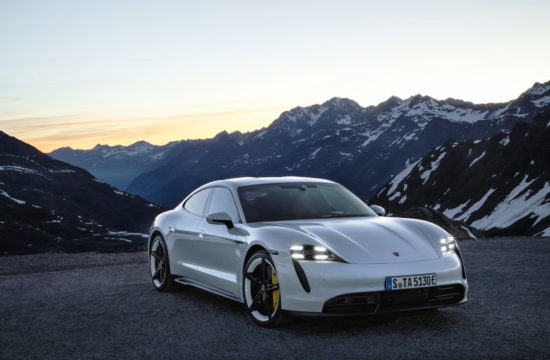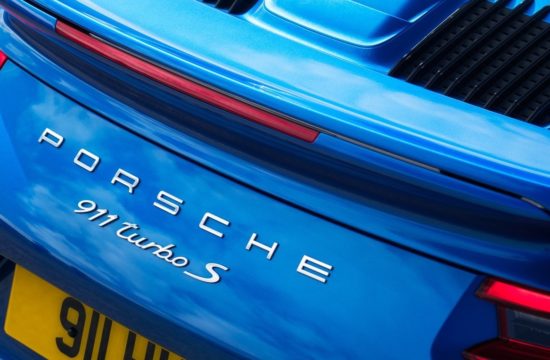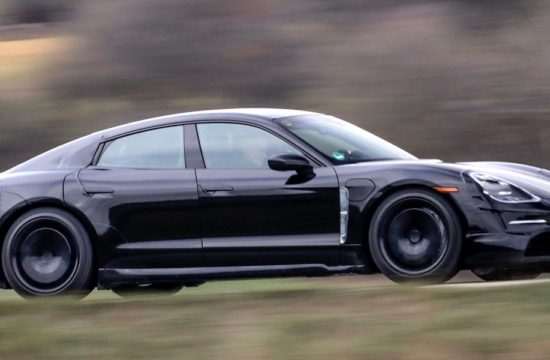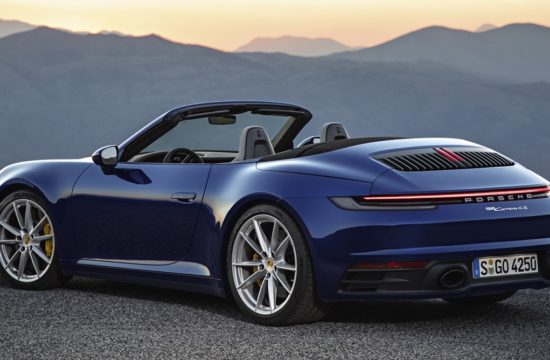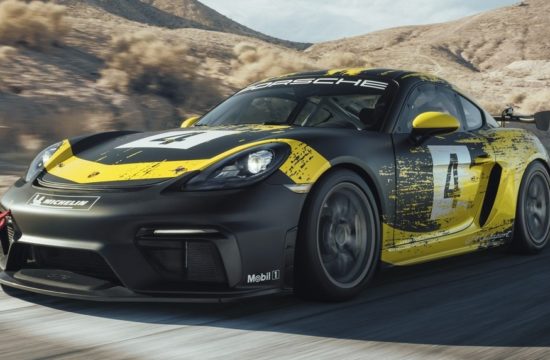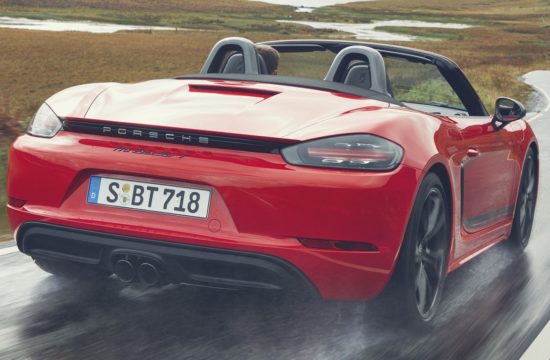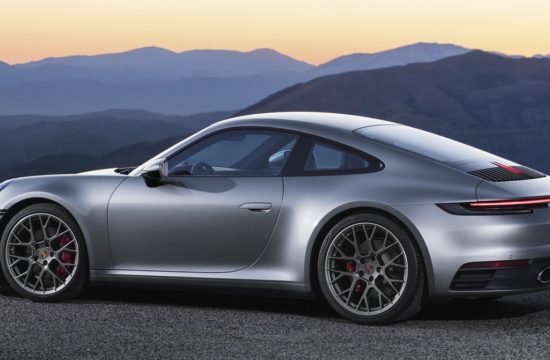The Porsche 911 is the German carmaker’s best known model and very few cars managed to draw as much attention as the legendary model from Porsche.
And its charm doesn’t only come from the fact that we’re talking about one of the most popular sports cars in the history of the automobile, but also from the beautiful history behind the brand and the model. Five years ago, Porsche unveiled the sixth 911 generation, which didn’t disappoint and was a proud witness of the company’s 50th anniversary that took place then.
So let’s take a look back and see the stories that made the Porsche 911 what it is today, one of the most appreciated sports cars in the world.
Background
Even though many think the 911 is Porsche’s first model, they are mistaken, because the 911 was created as a replacement for the company’s first sports car, the Porsche 356. An interesting fact is that the 356 is actually an evolution of the famous Volkswagen Beetle (the Beetle was designed by the legendary Ferdinand Porsche, while the 356 was designed by his son, Ferry Porsche). So can we say that the 911 has things in common with the original Beetle? Absolutely! Actually, its creators often mentioned that the 911’s shape is a more dynamic interpretation of the Beetle’s body.
The first sketches of the 911 were drawn by Ferdinand “Butzi” Porsche in 1959 and even though his father, Ferry Porsche, is considered the spiritual parent of the model,Butzi was the one to create the final design. He was helped by Erwin Komenda, one of Porsche’s most important employees, a designer that worked on both the Beetle and the Porsche 356. Speaking about work on the 911’s design, Ferdinand “Butzi” Porsche said his father always believed in him and in this project and constantly showed his support. And not because it was his son involved, but because he was absolutely convinced it would be a successful model.
The Porsche 911 finally made its debut at the 1963 Frankfurt Motor Show. What many don’t know is that the model was supposed to be called the Porsche 901 (that was its internal project number), but French carmaker Peugeot objected, claiming it had the naming rights for all car names that have three numbers and a zero in the middle. So Porsche decided to replace the “0” with “1” and even though all future models will officially be named “911”, they are known among fans, media and experts by their internal names.
1. Porsche 911 “901” (1963-1989)
What’s interesting about the 911’s debut is that at the Frankfurt show, the car on display didn’t have a functional engine, because it was not ready yet. It was only a few months later when the first running units were built, powered by a 2.0-liter flat-6 boxer engine delivering 128 hp, quite similar to the engine used by the Porsche 356. The air cooled, rear mounted engine was available with a four or five speed manual transmission.
After the Porsche 356 production was ended in 1965, Porsche thought there still was a market for a four cylinder sports car, so he created the Porsche 912, based on the 911. Basically, it was a 356 inside a 911 body, being powered by the 356’s 1.6-liter engine that produced 90 hp.
One year later, the German manufacturer introduced the more powerful 911S, which produced 160 hp, a significant power increase compared to the 911. But what really made the 911S have its special place in Porsche’s history is that it was the first time the famous Fuchs alloy wheels were introduced. The engine was further upgraded for motorsport, where the Porsche 904 and 906 were powered by a 210 hp version of the engine.
In 1967, the Porsche 911 Targa was introduced as the 911’s convertible version. Its name is Italian for “plate” and was inspired by the famous Targa Florio race in Sicily, Italy where Porsche cars had won six times since 1956. Porsche chose this type of design for the convertible (featuring the stainless steel clad roll bar) because he believed that the NHTSA will ban conventional convertibles from the United States market, which, at the time, was an extremely important one for the company.
Several other versions followed, such as the 911T (it replaced the 912 and it was powered by a 108 hp engine). The regular version was renamed to 911L and there was also a racing version called 911R, whose production run was extremely short (only 20 units built) and featured aluminum doors, twin-spark cylinder heads, magnesium crankcase and power output upgraded to 210 hp.
In 1970, the engine displacement was increased to 2.2 liters and all 911 versions were upgraded: 911T now produced 125 hp, 911E produced 155 hp, while the 911S delivered 180 hp. Out of the three, the 911E received great feedback from everyone and what’s interesting about it is that even though it had a lower power output than the 911S, it accelerated faster from 0 to 100 mph (that’s why it was soon called “the secret weapon from Zuffenhausen”). Engine displacement and power output were again increased in 1972, the 2.4 liter engine delivering 130 hp on the 911T, 165 hp on the 911E and 190 on the 911S. With this upgrade, a new mechanical fuel injection produced by Bosch was introduced together with a new transmission that handled the increased power better and had a conventional “H” pattern, with the first gear up to the left.
1973 saw the debut of the Porsche 911 Carrera RS, which is widely considered one of the best 911s of all time (if not THE best). The Carrera name came from Porsche’s victories in the Carrera Panamericana races, while RS stood for “Rennsport” (“Race Sport” in English). The Carrera RS was powered by a 2.7-liter engine (with the Bosch mechanical fuel injection) that produced 210 hp and featured a stiffer suspension system, rear spoiler, upgraded brakes and wider wheels. The car weighted less than 2,400 pounds and an even lighter version called Sport Lightweight was released (220 pounds lighter). The model was created by Porsche to take part in different racing events that required a certain number of street models to be produced for homologation purposes. In total, 1580 Carrera RS were built, including 49 units with power output upgraded to 300 hp.
In 1974, the 2.7-liter engine became standard for the entire 911 lineup, but the more powerful models were given a new 3.0-liter unit. This engine will also be used for the first generation of the 911 Turbo, which was internally called the “930”. Introduced towards the end of 1974, the car will be marketed as the Porsche 911 Turbo in Europe and as the Porsche 930 in the United States. The turbocharged engine produced 260 hp, but the engine displacement has been increased to 3.3-liters in 1978, producing a total of 300 hp. The 911 Turbo quickly became famous for its amazing acceleration, but were also notorious for the extreme turbo lag and for being pretty difficult to handle.
Starting with 1978, the Porsche 911SC powered by the 3.0-liter engine that produced 180 hp became the standard version of the 911. Three years later, the Porsche 911 Cabriolet made its debut at the 1981 Frankfurt Motor Show and entered production a year later. It quickly became a success, selling more than 4,200 units in the first year.
During this period, Porsche thought it was about time to replace the 911, so the Porsche 928 was born, being introduced in 1978. The car was supposed to be a combination between the sports characteristic of a 911 and the comfort features of a luxury sedan. However, the 911 was still selling incredibly well so Porsche decided to keep it in production, a decision which proved to be extremely important for the company’s future.
The 911SC was highly successful (almost 60,000 units were built since 1978), but it was replaced by the 9113.2 Carrera in 1984. It was powered by a 3.2-liter flat-6 engine that produced 231 hp(207 hpfor the United States market) and accelerated from 0 to 60 mph in 5.4 seconds, with a top speed of 150 mph. The car also featured other upgrades such as larger brake discs, improved oil cooling system and upgraded fuel and ignition controls.
In 1986, power output was increased to 217 hp and two special versions were also available: the 911 Carrera Club Sport (340 units built between 1987 and 1989, specifically created for racing) and the 911 Silver Anniversary (240 units built in 1989, marked the production of the 250,000th 911). Just like its predecessor, the 911SC, the 3.2 Carrera was also extremely successful, with more than 76,000 units sold between 1984 and 1989.
2. Porsche 911 “964” (1989-1993)
Work on a successor for the 911 began in the mid ‘80s and in 1989 the Porsche 964 was announced. Designed by Benjamin Dimson in 1986, the car was the first major revision of the 911 since it was introduced in 1963. Its design was more modern and it was the first Porsche to be available with the Tiptronic automatic transmission and four wheel drive (both as options).
The 964 was marketed as the Carrera 2 (for rear wheel drive models) and Carrera 4 (for four wheel drive units). Following the successful 3.2 Carrera, the new 911 had to keep the bar high, so it was powered by a 3.6-liter flat-6 engine that produced 247 hp and 228 lb-ft of torque that were “responsible” for a 0 to 60 mph acceleration in 5.5 seconds and a top speed of 163 mph. The car also introduced several features for the first time on a 911, such as power steering and power brakes (both offered as standard), while the front and rear bumpers were better integrated in the overall design. The 964 was available as a Coupe, Cabriolet and Targa.
In 1992, Porsche released the 964 Carrera RS in Europe. Based on the “Carrera Cup” race car, the engine’s power output was increased to 260 hp, but the lightweight car featured other important upgrades which made it suitable for racing. Porsche later produced an even more powerful version, the Carrera 3.8 RS. In the beginning, the Carrera RS was only available in Europe, but following feedback from American customers, the RS America edition was built and sold in the United States.
Porsche also decided to create a successor for the 930 Turbo, so the new 964 Turbo was introduced in 1990. While fans were disappointed to find out that Porsche didn’t develop a new engine and used the 3.3-liter from the 930, they were in for a surprise. Because even though Porsche didn’t have time to develop a turbocharged version of the new 3.6-liter engine, the upgrades they made to the Turbo were impressive. The engine ran smoother, turbo lag was not as bad as on the 930 and power output was increased to 320 hp. More than 3,600 units were sold until 1993.
A more powerful version was launched in 1992, the Turbo S, which had 386 hp and a lightweight interior, lowered suspension and manual steering , being targeted at hardcore sports fans. It was produced for about a year and only 80 units left the assembly line.
The 964 Turbo was upgraded in 1993, when a turbocharged version of the 3.6-liter was introduced. It produced 360 hp and 1,500 units were built between 1993 and 1994. The model is extremely popular among collectors and due to its limited production run, is also one of the rarest.
The Porsche 964 also made its appearance in some Hollywood blockbusters such as Bad Boys. The movie stars Will Smith and Martin Lawrence, with Will Smith’s character (Mike Lowry) driving a 964 Turbo. Also, in recent years, the car gained attention after it was driven by David Duchovny in TV series Californication.
3. Porsche 911 “993” (1994-1997)
While the first generation was produced for 26 years, the second one was in production for only four years, before being replaced by the third generation, the Porsche 993. This was the last generation of air cooled 911s and featured several important upgrades such a new alloy suspension that significantly improved stability in corners. It was also the first 911 to have a six speed manual transmission as standard (previous ones only had 4 or 5 speed transmissions).
Its design is the work of Tony Hatter and it represents an evolution of the 911 philosophy. It was inspired from the Porsche 989 concept which was created by the German carmaker in 1989 but which never got into production. It was sort of a ‘80s Panamera, might’ve been interesting to see it.
Anyway, back to the 993, the sports car was powered by a 3.6-liter flat-6 boxer engine producing 272 hp, upgraded to 281 hp in 1995. The Carrera Coupe and Cabriolet were available with a long list of optional features, some of the really premium, such as leather, wood or carbon fiber elements for the interior, hi-fi system or even fax machines. Also, the German carmaker offered its customers the possibility to choose whatever color they wished for their car, even if it wasn’t in the official palette.
The 993 Turbo was released in 1995 and was powered by a turbocharged version of the 3.6-liter engine that produced 402 hp. The performance upgrade was possible thanks to features like twin turbochargers, redesigned cylinder heads or electronic engine management and it was the first 911 Turbo to come with four wheel drive. An even more powerful version, the Turbo S, was offered in an extremely limited number (only 186 units built) and featured a power increase up to 450 hp, four-pipe exhaust system, airintake openings behind the doors and was instantly recognizable by its yellow brake calipers.
The Carrera 4 S was released in 1996, followed by the Carrera S in 1997 and both were a combination between the regular Carrera and the Turbo. The body was almost similar to the Turbo’s, had the same large brake discs (calipers were red, though) but were powered by the same engine as the Carrera. The Carrera RS, however, is a completely different story. The lightweight version of the Carrera was powered by a naturally aspirated 3.8-liter engine that produced 300 hp and was built between 1995 and 1996. With many features removed to save weight (including some safety features), the car was not approved for export in the United States.
Another impressive version of the 993 is the GT2. Initially developed as a racing version of the Turbo, the GT2 was an incredible rear wheel drive sports car. When it was introduced, the 993 GT2 was producing 430 hp, but power output has been upgraded to 450 hp in 1998. Since homologation required for car manufacturers to produce street legal versions too, there was an extremely limited number of street GT2 built, which are extremely rare and valued by collectors all over the world. Another extremely rare version of the 993 is the Turbo Cabriolet, several units (believed to be around 15) being produced in 1995, before the Turbo Coupe was released.
Porsche 911 “996” (1998-2005)
1998 saw the introduction of a new generation for the 911, the 996. When it was introduced, it took everyone by surprise with how different it was from what everyone knew about the 911. First of all, it looked different. Designed by Harm Lagaay, it was the first 911 in history not to have round lights (this was quite controversial, as some appreciated that, some didn’t), it featured a seriously more aggressive body and also had new interior. But that’s nothing compared to what was under the hood. For the first time in its history, the 911 dropped the air cooled engine, being powered by a water cooled 3.4-liter flat-6 engine that produced 296 hp. Porsche decided to make this change following emission standards getting more stringent and for the improved refinement offered by water cooled engines. Overall, the 996 represented the most significant evolution of the 911 since the original model was introduced in 1963. And people loved it, because more than 175,000 units were sold during the model’s seven year production run.
In 2000, the Porsche 996 Turbo was unleashed, featuring a twin-turbo 3.6-liter engine that produced 420 hp. Acceleration from 0 to 60 mph was made in 4.2 seconds and a factory installed upgrade package was available starting with 2002, which increased power output to 450 hp.
A minor power upgrade was made to the Carrera in 2001, including a 4 hp increase, followed by another one in 2002 (15 hp this time), plus, more important, a minor redesign that included new headlights and restyled front fascia. What’s interesting about this styling update is that it was Porsche’s answer to Carrera customers complaining about how similar the Carrera’s headlights were to the Boxster. The small roadster had been introduced in 1996 and the cars were quite similar in design, annoying Carrera customers which paid a lot more for their cars and weren’t too happy with the similarity.
Porsche also produced two GT versions based on the 996. The first one, the GT3 was first introduced in 1999 and was powered by the same engine as the Turbo. And just like the previous 993 GT, it was not approved for import in the United States. However, the second version of the GT3, powered by the more powerful 3.6-liter engine that delivered 380 hp, was the first GT ever to be officially sold in North America. But la piece de resistance of the 996 was the GT2. The most powerful 993 was powered by a twin-turbo version of the 3.6-liter engine that featured numerous upgrades including new intake and exhaust, larger intercoolers and revised ECU. The final result was a car that produced 489 hp, sprinted from 0 to 60 mph in 3.9 seconds and reached a top speed of 198 mph. Other upgrades included larger wheels and lightweight ceramic brakes, while components like rear seats and air conditioning systems were removed to reduce weight as much as possible.
Throughout the production run, several special editions were introduced. One of them was “The 911 for the Millenium” which was available in 2000 and celebrated the start of the new millennium. Only 911 units were built and extra features included a Violet Chromaflair paint finish, leather interior, plus special badges highlighting the model’s exclusive nature. The “40th Anniversary Edition” based on the Turbo was launched in 2004, celebrating 40 years since the first 911 rolled off the production line.
Porsche 911 “997” (2005-2012)
The fifth generation 911, the 997, was launched in 2005 and the most obvious change was the comeback to round headlights. But that was only at a first glance, because the car featured countless other aesthetic, aerodynamic and performance upgrades. Including the interior, which even though had a more modern feel, it was closer to the classic 911 than the 996.
The Carrera was powered by a slightly revised version of the 3.6-liter engine from the 996, with upgrade packages available for the S, 4S and Targa versions. The base Carrera accelerated from 0 to 60 mph in 4.8 seconds and reached a top speed of 180 mph, while the Carrera S was 0.1 seconds faster to 60 mph and could go 190 mph. There was also a Cabriolet version available, with similar performances to the Coupe. Wait. What? Aren’t convertibles usually slower? Yes, they are, but Porsche did an amazing thing with the 997. They first developed the Cabriolet, convinced that if they start with the more difficult model, creating the Coupe would be a walk in the park. And they were absolutely right, the 997 Cabriolet being one of the best convertibles money can buy and an excitement to drive.
The 2006 Geneva Motor Show saw the debut of the 997 GT3 and the 997 Turbo. The Turbo’s engine delivered 470 hp and 460 lb-ft of torque and used two BorgWarner VTG turbines, a premiere for Porsche. Performance figures are impressive: 0 to 60 mph in 3.7 seconds (3.4 for the Tiptronic S automatic transmission) and top speed of 198 mph. But in true Porsche style, these official performance numbers are usually underrated, as several tests were able to achieve better times (3.2 seconds from 0 to 60 mph and 200 mph top speed). The Turbo Cabriolet was introduced one year later and when it debuted, it became the world’s fastest production convertible, achieving similar results to its Coupe brother. As for the GT3, it was powered by the same engine as the Turbo, without the turbochargers, of course. Rated at 409 hp, it was able to sprint from 0 to 60 in 4.1 seconds and reach a top speed of 190 mph.
Launched in 2007, the Porsche 997 GT2 became one of the most powerful 911s ever built. It produced 523 hp from an upgraded version of the twin-turbo 3.6-liter flat-6 engine that also powered the Turbo. 0 to 60 mph was made in 3.6 seconds, 0 to 100 mph in 7.4 seconds and top speed was 204 mph. It was only available with a six speed manual transmission and it was the first Porsche in history to come with launch control.
A significantly revised version of all 997s was launched in 2009, with many considering it a second generation of the 997. Revisions included several styling upgrades, engine upgrades for almost all models and, perhaps the most important, the introduction of the now famous PDK seven speed dual clutch transmission.
The Turbo and the Turbo Cabriolet were powered by a completely new engine, a 3.8-liter unit producing 500 hp. Official Porsche figures indicated 0 to 60 mph acceleration in 3.4 seconds and top speed of 194 mph, but several tests managed to achieve acceleration times of 2.9 seconds. With the introduction of the PDK transmission, a new steering wheel with mounted gearshift paddles was made available. The Turbo S was launched at the 2010 Geneva Motor Show and the 530 hp make it the fastest car Porsche ever built, with 0 to 60 mph acceleration in 2.6 seconds (better even than the current generation, at least so far).
Other versions of the 997 include the GT3, the GT3 RS, the GT3 Cup, the 911 Sport Classic (its look is inspired by the 1973 Carrera RS 2.7), the 911 Carrera GTS (mid-level model placed between the Carrera and the GT3) and the 911 Speedster (only 356 units were built, inspired by the famous Porsche 356).
Porsche 911 “991” (2012-present)
Unveiled for the first time at the 2011 Frankfurt Motor Show, the current 911 generation (internally named 991) received several upgrades, including lower weight, an optimized chassis offering better handling and the engines got more powerful and more fuel efficient at the same time.
The 991’s wheelbase is 100 mm longer than the 997’s, offering the car improved stability and more interior space for passengers. Even though design changes are not too obvious, the car’s silhouette has been optimized for improved aerodynamics. The Carrera is powered by a 3.4-liter boxer engine producing 350 hp, while the Carrera S has a 400 hp version of the 3.8-liter unit. Both units offer better performances than the engines they replace, the Carrera being 0.1 seconds faster from 0 to 60 mph (0.3 if equipped with the Sport Chrono package), while the Carrera S is 0.2 seconds faster.
Fuel economy has also been significantly improved, Porsche announcing a 16% overall improvement. CO2 emissions also dropped, the Carrera being the first Porsche in history to go below 200 grams of CO2 per 100 km. This was made possible by a Start-Stop system, an engine temperature management system, braking regeneration system and by the first seven speed manual transmission in the world (a special function of the PDK transmission).
Earlier this year, the Porsche 991 Targa made its debut at the Detroit Motor Show, featuring a design that pays homage to the original 911 Targa. Just like the classic model, the B pillar is replaced by a metallic frame with three air intakes (thatdon’t’ have an actual purpose, just decorative). Also, a new feature was introduced on the 991, electric controls for the roof, which can be automatically lowered behind the rear seats just by pushing a button. As standard, the sports car comes with Porsche’s four wheel drive system and will be powered by the same engines as the Carrera and the Carrera 4S.
So, 51 years of Porsche 911. Absolutely impressive! And what’s even more impressive is that the model is still going strong and as long as cars will still be around, the 911 will probably remain one of the most wanted sports cars in the world, a true legend.


